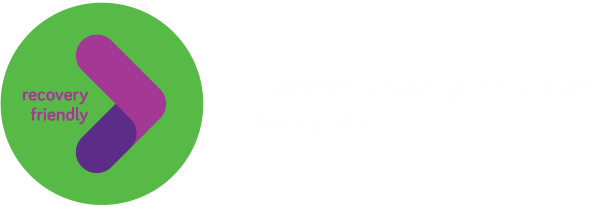The problem
As of June 2022, medicinal marijuana was legal in 37 states (recreational marijuana in 19 states) (NCSL, 2022) and approximately ⅔ of Americans thought marijuana should be legalized (Gallup, 2020). Cannabis is the most prevalently used illicit drug, with 18% of people polled having used it in the last 12 months (SAMHSA, 2020). As of July 2022, 188,440 medical licenses had been issued in Missouri (DHSS, 2022).
The issues surrounding marijuana are complex. Although 65% of Missourians voted to legalize medicinal marijuana in 2018 (DHSS), some employers believe marijuana to be akin to street drugs like heroin. On a federal level, it’s still considered to be a Schedule 1 Substance under the Controlled Substance Act, indicating it has high potential for misuse, and federal law can set restrictions on companies to override state law (DEA, 2020).
This means legal medicinal marijuana users can be fired if they test positive for marijuana or cannabinoids at work. Some states restrict employers from firing individuals testing positive on a maijuana screen or allowing companies to deny hiring someone based on a failed marijuana screen, but Missouri is not in the mix.
If an employee isn’t fired, they may be given the option to undergo rehabilitation to quit using marijuana.
The complications
Some employees may be using medical marijuana or cannabinoids to help ease conditions like chronic pain, glaucoma, seizures, post-traumatic stress disorder, or alleviation of chemotherapy symptoms like nausea (Hill 2015, Whiting 2015). If individuals utilizing medical marijuana for one of these purposes test positive on a screen, they may not want to cease use because of the potential for worse health outcomes or decreased comfort of living, even if their job is at stake.
Currently, drug screenings used in workplaces (most often urine) don’t assess if employees are under the influence; just if they’ve used marijuana recently. Marijuana can stay in the system for over a week, resulting in a positive screen (University of Rochester Medical Center, 2022). Tests can take up to a week to determine results, leaving a time where employees may be out of work and unpaid, depending on workplace policies.
These and other repercussions disproportionately affect minorities, who work in blue collar jobs at a higher proportion (Dodson, 2013). This can further create systemic divides and continue to oppress low income individuals.
The result
Labor shortages combined with drug screenings for employment mean some industries continue to be short-staffed. Current employees can be fired due to random drug screenings if employers don’t have Recovery Friendly Workplace (RFW) steps in place, perpetuating the issue and harming businesses, employees, and communities. Employers who choose to terminate a staff for marijuana use or delay implementing policies allowing legal medical marijuana use, lose the money they have invested in training these employees. Reducing turnover, and adding support systems is a better solution for all.
Some businesses have stopped drug testing altogether because they’re in desperate need of workers. Some municipal areas like Kansas City and St. Louis have put restrictions on pre-employment screens, with the exception of some positions like law-enforcement, individuals utilizing commercial drivers licenses for work, and a few others (Jaeger 2021, 2022).
Other employers have been concerned about potential workplace accidents caused by marijuana use and have reduced the amount of worker’s compensation when an accident involves an individual who tests positive for marijuana. Companies like Amazon don’t require a pre- employment marijuana free test as this opens their pool of applicants, but will test in workplace accident cases (Galetti, 2022). This could still perpetuate the stigma of marijuana and workplace accidents, even though individuals involved may not be under the influence at the time of the accident and may have been using marijuana legally during non-work hours (Howard, Chosewood, Jackson-Lee, & Osborne, 2020).
While some data suggests marijuana use is tied to higher accident rates and lower productivity (Macdonald, Hall, Roman, Stockwell, Coghlan, & Nesvaag, 2010), other research suggests medical marijuana use may lower worker’s compensation claims by helping employees manage underlying conditions like pain and other symptoms that may cause workplace injuries (Ghimire, & Maclean, 2020). Some research even suggests the use of medical marijuana may reduce the use of opioid use (Bradford, Bradford, Abraham, & Bagwell Adams, 2018).
The solution?
Some suggestions for workplaces have been to monitor employees for signs of being under the influence of marijuana like poor balance or coordination, red eyes, lethargy, or confusion. They may or may not follow-up with a drug test (Sobaski, 2018).
Tests for marijuana could be updated to test current state of influence. Workplace systems could support employees during the time it takes for test results to come back, and help find a solution together, upon the occurrence of a positive result.
Both of these methods, combined with open communication and clear guidelines and policies, could help reduce workplace stigma of medicinal marijuana use during non-work hours, but it appears this topic may remain a grey area for some time to come.
References
Bradford AC, Bradford WD, Abraham A, Bagwell Adams G. Association Between US State Medical Cannabis Laws and Opioid Prescribing in the Medicare Part D Population. JAMA Intern Med. 2018;178(5):667–672. doi:10.1001/jamainternmed.2018.0266
Dodson H. (2013). Racial differences exist in reports of workplace drug testing. Retrieved from https://news.yale.edu/2013/09/25/racial-differences-exist-reports-workplace-drug-testing
Drug Enforcement Administration (DEA). (2020). Drug Fact Sheet on Marijuana/ Cannabis. Retrieved from pdf https://www.dea.gov/sites/default/files/2020-06/Marijuana-Cannabis-2020_0.pdf
Galetti B. (2022). Amazon is supporting the effort to reform the nation’s cannabis policy. Retrieved from https://www.aboutamazon.com/news/policy-news-views/amazon-is-supporting-the-effort-to-reform-the-nations-cannabis-policy
Gallup News Service (2020). Gallup Poll Social Series: Crime. Retrieved from pdf found https://news.gallup.com/poll/323582/support-legal-marijuana-inches-new-high.aspx.
Ghimire KM, Maclean JC. Medical marijuana and workers’ compensation claiming. Health Economics. 2020;1–16. https://doi.org/10.1002/hec.3992
Hill KP. Medical Marijuana for Treatment of Chronic Pain and Other Medical and Psychiatric Problems: A Clinical Review. JAMA. 2015;313(24):2474–2483. doi:10.1001/jama.2015.6199.
Howard J, Chosewood C, Jackson-Lee L, and Osborne J. (2020). Cannabis and Work: Implications, Impairment, and Need for Further Research. Retrieved from https://blogs.cdc.gov/niosh-science-blog/2020/06/15/cannabis-and-work/
Kinney GA. (2022). Missouri Employers: Evaluate Your Marijuana Drug Testing Policy in the Face of This Tight Labor Market. Retrieved from https://www.heplerbroom.com/blog/employers-evaluate-marijuana-testing-policies-during-tight-labor-market/.
Macdonald S, Hall W, Roman P, Stockwell T, Coghlan M, Nesvaag S. Testing for cannabis in the work-place: a review of the evidence. Addict Abingdon Engl. 2010;105(3):408-416. doi:10.1111/j.1360-0443.2009.02808.x
Missouri Department of Health and Senior Services (DHSS). (2022). Data and Reports: Patient and Caregiver Data. Retrieved from https://health.mo.gov/safety/medical-marijuana/stats.php.
Missouri Department of Health and Senior Services (DHSS). Medical Marijuana: About us. Retrieved from https://health.mo.gov/safety/medical-marijuana/about-us.php.
National Conference of State Legislatures (NCSL). (2022). State Medical Cannabis Laws.Retrieved from https://www.ncsl.org/research/health/state-medical-marijuana-laws.aspx.
Sobaski L. (2018). Missouri Medical Marijuana Law Raises Questions for Employers. Retrieved fromhttps://www.shrm.org/resourcesandtools/legal-and-compliance/state-and-local-updates/pages/missouri-medical-marijuana-law-raises-questions-for-employers.aspx.
Substance Abuse and Mental Health Services Administration (SAMHSA). (2020). Key substance use and mentalhealth indicators in the United States: Results from the 2019 National Survey on Drug Use and Health (HHS Publication No. PEP20-07-01-001, NSDUH Series H-55). Rockville, MD: Center for Behavioral Health Statistics and Quality, Substance Abuse and Mental Health Services Administration. Retrieved from https://www.samhsa.gov/data/
Whiting PF, Wolff RF, Deshpande S, et al. Cannabinoids for Medical Use: A Systematic Review and Meta-analysis. JAMA. 2015;313(24):2456–2473. doi:10.1001/jama.2015.6358.

